The long read: The crisis has brought the economy to a near halt, and left millions of people out of work. But thanks to intervention on an unprecedented scale, a full-scale meltdown has been averted for now
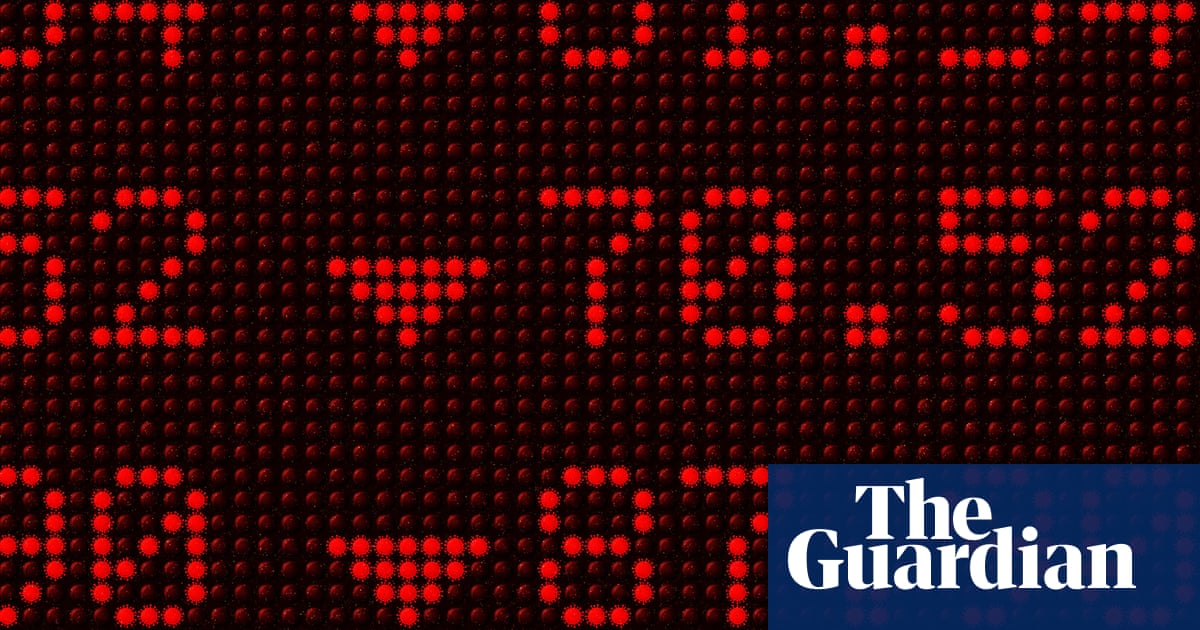
In the third week of March, while most of our minds were fixed on surging coronavirus death rates and the apocalyptic scenes in hospital wards, global financial markets came as close to a collapse as they have since September 2008. The price of shares in the worlds major corporations plunged. The value of the dollar surged against every currency in the world, squeezing debtors everywhere from Indonesia to Mexico. Trillion-dollar markets for government debt, the basic foundation of the financial system, lurched up and down in terror-stricken cycles.
On the terminal screens, interest rates danced. Traders hunched over improvised home workstations known in the new slang of March 2020 as Rona rigs screaming with frustration as sluggish home wifi systems dragged behind the movement of the markets. At the low point on 23 March, $26tn had been wiped off the value of global equity markets, inflicting huge losses both on the fortunate few who own shares, and on the collective pools of savings held by pension and insurance funds.
What the markets were reacting to was an unthinkable turn of events. After a fatal period of hesitation, governments around the world were ordering comprehensive lockdowns to contain a lethal pandemic. Built for growth, the global economic machine was being brought to a screeching halt. In 2020, for the first time since the second world war, production around the world will contract. It is not only Europe and the US that have been shut down, but once-booming emerging market economies in Asia. Commodity exporters from Latin America and sub-Saharan Africa face collapsing markets.
It is now clear that we can, if circumstances demand, turn the economy off. But the consequences are catastrophic. Across the world, hundreds of millions of people have been thrown out of work. From the street hawkers of Delhi to the personal trainers of LA, the service sector by far the most important employer in the modern economy has been poleaxed. Never before has the global economy suffered a shock of this scale all at once. In the US alone, at least 17 million people have lost their jobs in the last three weeks. A severe global recession is now inevitable.
The crucial question is how much of the world economy will survive the lockdown, and this depends on the availability of credit. Business runs on credit. The bits of the economy that do continue to function the warehouses, the mobile phone providers and internet firms all need credit. Wage bills for those still working are financed through credit. Even greater is the need of those who are not working. If they cant get loans, bills will go unpaid, which spreads the pain. To survive the lockdown, millions of families and firms around the world are relying on grants and loans from the state. But tax revenues have collapsed, so states need credit, too. Across the world we are witnessing the largest surge in deficits and government debt since the second world war.
But who do we borrow from? Banks, financial markets and money markets provide the financial fuel of the world economy. Normally, credit is sustained by the optimistic promise of growth. When that dissolves, you face a self-reinforcing cycle of collapsing confidence, contracting credit, unemployment and bankruptcy, which spreads a poison cloud of pessimism. Like an epidemic, if left uncontrolled, it will sweep all before it, destroying first the financially fragile and then much else besides. It is not for nothing that we speak of financial contagion.
What began with the lockdown in Wuhan in January is more intense and more fast-moving than any recession we have seen before. In a matter of weeks we have been confronted with an economic outlook that is as grim as at any moment since the 1930s. But it could have been even worse. Imagine a situation in which, on top of the pain of the lockdown and the hellish scenes in hospital wards, we also face calls for austerity because the government cannot safely finance extra spending. Imagine that interest rates were surging, and the terms for credit cards, car loans and mortgages were suddenly getting stiffer. All of this may still happen. It is already happening to the weaker economies around the world. But for now at least, it has not happened in Europe and the US even after the turbulence of March 2020, when the pandemic hit with full force.
What Europe and the US have succeeded in doing is to flatten the curve of financial panic. They have maintained the all-important flow of credit. Without that, large parts of their economies would not be on life support they would be stone dead. And our governments would be struggling with a financial crunch to boot. Maintaining the flow of credit has been the precondition for sustaining the lockdown. It is the precondition for a concerted public health response to the pandemic.
During major crises, we are reminded of the fact that at the heart of the profit-driven, private financial economy is a public institution, the central bank. When financial markets are functioning normally, it remains in the background. But when they threaten to break down, it has the option of stepping forward to act as a lender of last resort. It can make loans, or it can buy assets from banks, funds or other businesses that are desperate for cash. Because it is the ultimate backer of the currency, its budget is unlimited. That means it can decide who sinks and who swims. We learned this in 2008. But 2020 has driven home the point as never before.
The last six weeks have seen a bout of intervention without precedent. The results have been momentous. A giant public safety net has been stretched out across the financial system. We may never know what went on behind the closed doors of the US Federal Reserve, the European Central Bank and the Bank of England during those critical moments in March. So far, only muffled sounds of argument have reached the outside. But as the virus struck, the men and women in those three central banks held the economic survival of hundreds of millions of people and the fate of nations in their hands. This is the story of how global financial meltdown was averted by central banks taking decisions that, just a month earlier, they would have dismissed as utterly impossible.
The financial markets scan the world for risk. Even the slightest disruption in the vast networks of finance, production and trade offers the opportunity for profit or the threat of loss. So the news on 23 January, that the outbreak of an unknown virus was serious enough for the Chinese authorities to impose a gigantic quarantine, hit the traders on their Bloomberg terminals hard. Bank economists struggled to get a grip on the dimensions of the problem. Would this be a minor disruption like Sars in 2003? Or were we facing the nightmare scenario of the Hollywood film Contagion?
In late January, investors began to move more and more money out of things like commodities and shares in companies, and into the relative safety of government bonds. What comforted them was the idea that the virus was a problem contained in China. The day that illusion burst the day that investors realised that Covid-19 was becoming a global pandemic was Monday 24 February. Over the weekend the Italian government had announced that it was imposing a quarantine in parts of northern Italy. It was the first place in the west to do so.
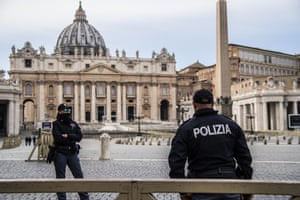
Ever since the financial crisis of 2008, Italys economy had been stagnating. Both its banks and its public finances were in a precarious state. Italys debt levels were high enough to cause bond markets to periodically panic. Now the country would become the frontline in the virus fight. The coronavirus would test the solidarity of the eurozone at its weakest link.
At this point, not everyone was taking the threat seriously. The caseload in the US still looked tiny. Donald Trump dismissed the virus as a scare. But investors were now seriously worried. Over the week that began on 24 February, Americas main stock market index, the S&P 500, lost 10% of its value. The chair of the US Federal Reserve, Jerome Powell, was concerned enough to signal that he would soon be bringing forward a cut in interest rates, in order to stimulate consumption and investment. It was a conventional reaction, but Covid-19 was no longer looking like a conventional threat.
By early March, whatever complacency had prevailed was long gone. The death toll in northern Italy was rising into the hundreds and it was only a matter of time before the government in Rome would be forced to declare a nationwide lockdown.
Investors around the world started to panic. In times of uncertainty, they want safe-haven assets. What makes a government bond a safe investment is not only the financial standing of the borrower, but the depth of the market in which lenders can sell them if they want to get their money back sooner. There is no deeper market than that for US Treasuries, as US government bonds are known. The greater the demand for safety, the lower the interest rate the US government generally has to pay to borrow. In the first week of March, those rates were at record lows.
For the rest of the world economy, this run to safety was an alarming signal. One sector that knew it was heading for trouble was oil. When the global economy slows, so does the demand for energy. The oil industry of the 21st century consists, on the one hand, of large, state-controlled producers above all the Opec group dominated by Saudi Arabia and Russia and, on the other hand, of the USs upstart fracking industry. To match falling demand for oil, the Saudis wanted to cut overall production and thus prop up the price. For this they needed the agreement of the other big producers, but Russia refused to go along with them. As Moscow saw it, cutting production with a view to propping up prices was an invitation to American shale producers to fill the gap. If the politics of climate change meant that the future really would bring a transition away from fossil fuel, winning the end game involved seizing as much of the market as possible for as long as oil was being pumped. So Russia decided not to cut production, but to launch a price war. Not wanting to be outdone, over the weekend of 7-8 March, Saudi Arabia took up the challenge. It announced that it would be maximising production and discounting its prices.
On Monday 9 March, as markets opened, oil prices plummeted. The benchmark Brent crude fell 24% by the end of trading. By the end of the month its value had halved. From the point of view of the financial markets, the ferocity of the competition in the oil industry was a harbinger of things to come. Falling demand would force industry after industry to either slash prices or contract production. Either way, it was bad news for profits.
When trading opened on Wall Street that morning, the situation was so dire that the circuit-breakers automatic stops to trading that are triggered when prices fall by a certain amount were soon activated. This was supposed to slow a wild selloff. But it sent a message of panic. As soon as trading resumed, everything sold.
A rout like the one that began on 9 March has a perverse logic. When fund managers face withdrawals from the people whose money they manage, they need cash and have to choose which assets to sell first. They might prefer to sell the riskiest investments, but those can be disposed of only for a large loss. So instead, they attempt to sell their most liquid and safe assets government bonds. That means the prices of those bonds fall, dragging them into the maelstrom. This has the knock-on effect of unravelling a basic relationship on which many investors rely: typically, when shares go down, bonds go up, and vice versa. So to protect yourself against risk, you buy a portfolio made up of both. If everything works as its supposed to, the swings should balance each other out. But in the panic that began on 9 March, this was no longer happening: rather than balancing out, the price of shares and bonds were collapsing together. The only thing that anyone wanted to hold was cash, and what they wanted most of all were dollars. The surging US dollar in turn spread the pressure worldwide to everyone who owed money in that currency.
The Fed had desperately tried to halt the run. To signal its willingness to support the economy and ease the pressure on the world economy from the strong dollar, it had brought forward an interest rate cut that had been expected for the middle of the month. But with the darkening horizon, lower interest rates did little to help. Who would borrow or invest under such circumstances? Confidence was broken. Just how badly would become clear over the following two weeks.
It was a cruel twist of fate that Italy was the first European country struck by the virus. Italy has a sophisticated medical system; Lombardy, the region worst affected by the virus, is among the richest places in the world. The weakness lies in the countrys public finances. To fight the crisis, Italy needed to be spending money on public health and to support the economy during the lockdown. But would the corset of the euro give it the leeway?
The problem was that spending to meet the coronavirus crisis would raise Italys public debts. The more indebted you are, the higher the price you pay to borrow. For a European government, that premium is measured by the difference, or spread, between your interest rate and that paid by Germany, the highest-ranked borrower in Europe. With its pre-crisis debt at just under 135% of GDP, Italy was perilously close to the point at which rising spreads would drive up its deficit and thus, in a vicious circle, make its debts less and less sustainable.
To ensure that investors stay calm, it is the job of central banks to act as the buyer of last resort. But because Italy is a member of the eurozone, it no longer has an independent national central bank that can buy its debt. Its monetary policy is set by the European Central Bank, which is prohibited from directly buying a member countrys newly issued debt. That left the Italians exposed. As the coronavirus crisis intensified in late February and investors became concerned by the prospect of greater state spending, the spread to German interest rates increased. If they rose too far, Italy would face not only a public health disaster but a financial crisis, too. What could Europe do to help?
Italy already had reason to feel abandoned by its European partners: they had done little to help it tackle its chronic unemployment problem, or to take in the refugees arriving from north Africa. The coronavirus was a new test. The signs were not good: other member states were grudging in their reaction to Italys appeals for help. But what really mattered, for the countrys financial survival, was the stance taken by the ECB.
Under its former president, Mario Draghi, the ECB had emerged in the course of the last financial crisis as the pivot of the European economy. Draghis promise to do whatever it takes to hold the eurozone together, uttered at the height of the crisis in July 2012, has become a mantra of modern economic policy. Faced with a financial panic, restoring confidence is key and because a central bank is in charge of issuing currency, it is the only crisis-fighter with truly unlimited firepower.
Northern European fiscal and monetary conservatives had always been suspicious of Draghis interventions, which they saw as a way to transfer Italys liabilities on to Europes balance sheet. And his final round of bond-buying, in 2019, proved particularly controversial. By the time he ended his stint at the ECB that autumn, it was all Angela Merkels government in Berlin could do to ensure that there were no unseemly scenes at his retirement party.
Christine Lagarde, the former finance minister of France and IMF boss, took over as head of the ECB in October 2019, and inherited Draghis extraordinarily difficult position. Now she would have to demonstrate that she could handle a major financial crisis. The ECB press conference on 12 March was the crucial test.
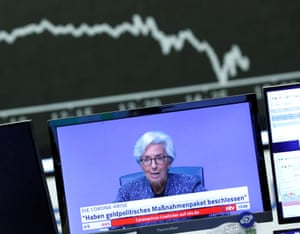
The ECB had good news for Europes banks: they would receive a huge amount of low-cost funding. It was also going to buy an additional 120bn in assets although if that was spread across the members of the Eurozone, as the rules demanded, it would hardly give Italy the support it needed. But the critical moment came when Lagarde was asked a question about the ECBs attitude to sovereign debt. Her response was remarkable. We are not here to close spreads, she said. This is not the function or the mission of the ECB. There are other tools for that, and there are other actors to actually deal with those issues.
Spreads meant Italy. And what Lagarde seemed to be saying was that it was somebody elses problem. But if the ECB wasnt going to help Italy, who would? Did it really expect the other member states of the eurozone to string together a fiscal safety net for Italy? Obviously, given the bad blood between Italy and the northern Europeans, Lagarde had to walk a fine line. But with hundreds of people dying every day, with global financial markets in a state of repressed panic, was the ECB seriously suggesting that it would wait for Berlin, Paris and Rome to settle their differences before putting out the fire? It was breathtaking.
For investors, Lagardes comment came like a bolt of lightning. And within minutes, she started to backtrack. She went in front of the cameras to promise that the ECB would use the flexibility of its 120bn programme to prevent the fragmentation of the euro area code for helping Italy. But the damage was done. The markets slumped, and the price that Italy had to pay to borrow leaped: averaged out, the spread moved by 0.65%. That may not sound like a big difference, but when applied to a mountain of debt the size of Italys, it raises the interest bill by as much as 14bn for just one year. It was the last thing Italy needed. In a rare public rebuke, both Paris and Rome distanced themselves from the ECB. The crisis was pulling Europe further apart.
After five terrifying days of market turmoil, the weekend of 14-15 March was a moment for central banks around the world to coordinate their response. What everyone wanted was dollars, so it was above all the Federal Reserve that needed to take the lead. And as its chair, Powell did. He called an unscheduled press conference for the afternoon of 15 March. What he announced was remarkable.
With immediate effect, the Fed was cutting interest rates to zero something it had done just once before, at the height of the crisis in 2008. To stabilise the US Treasury bonds market, it would be buying $700bn in a new round of so-called quantitative easing. And it would start big, buying $80bn by 17 March. In the space of just 48 hours, it would spend more on treasuries than the Fed spent in most months in the aftermath of 2008.
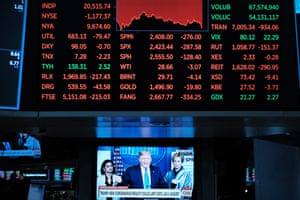
These were measures for the US economy. But the coronavirus was a global problem. The flight to safety and the ensuing rise in the dollar had put pressure on everyone who had borrowed in the US currency. So, to ensure that dollars could be piped to every financial institution in every major financial centre in the world, the Fed announced that it was improving the terms on the so-called liquidity swap lines deals by which the major central banks agree to exchange dollars for sterling, euros, swiss francs and yen in unlimited amounts.
Powell was deploying the main weapons of the 2008 crisis with far greater speed than his predecessors ever had. But it was still not enough. When the markets opened the next day, 16 March, the fall was vertiginous. The circuit-breakers are supposed to come into effect if the market falls by more than 7%. That morning, the fall was so quick that the S&P 500 dropped by 8.1% before trading could be stopped. The so-called fear index, VIX a measure of market volatility surged to levels last seen in the dark days of November 2008.
The fear in the markets was now feeding on itself. If the Feds magic of 2008 no longer worked, then what would?
The foreign exchange market, where currencies are traded, is the biggest market in the world. And the place where the most transactions are booked is the City of London. On an average day, transactions back and forth total $6.6tn. But on Wednesday 18 March, there was only one trade: people wanted to sell everything. The only thing they wanted to buy were dollars. Every other currency was falling.
The central banks failure to calm the markets had set the stage for the worst days of the panic. Coronavirus cases were piling up in Europe more rapidly than at the peak of the crisis in Wuhan. Hedge funds were placing multi-billion-dollar bets that the recession in Europe would be protracted. Blue chip companies like Apple were facing stiff premiums to borrow for as little as three months ahead. Even gold, a classic safe haven, was selling.
That Wednesday, on his third day as governor of the Bank of England, Andrew Bailey organised a press conference in an effort at reassurance. But as he was speaking, sterling plunged by 5% to its lowest level since 1985. Meanwhile, the market for UK government bonds, also known as gilts the oldest major asset market in the world was witnessing unprecedented turmoil. It was, in Baileys understated phrasing, bordering on the disorderly.
In response, the Bank of England monetary policy committee met the next day in emergency session and announced that the Bank would be buying 200bn in gilts. Unlike in 2008, it would not be doing so on a prearranged schedule. As Bailey explained: We will act in the markets promptly and rapidly as we see appropriate. This was no time for timetables. The central bank was, by its own admission, flying by the seat of its pants.
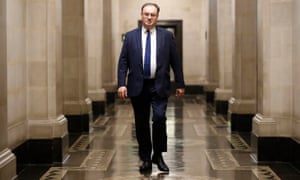
On an emergency conference call on the evening of 18 March, the ECB executive board decided that it, too, needed to act. Under a pandemic emergency purchase programme, it announced that it would begin by buying 750bn of government and corporate debt. But the ECB was willing to go even further than that. It said that, if necessary, it would revise some of its self-imposed limits.
For an institution as hidebound as the ECB, this amounted to a revolution. Self-imposed limits inflation targets, rules on which European governments debt it could buy and in what quantities are what the ECB lives by. It is clear that conservative members of the banks governing council continued to resist such a move. But in the end it was the turmoil in the markets that decided the issue. The ECB needed to send a signal of determination. If Lagarde had fluffed her whatever it takes moment, the ECB was now at least promising to do whatever was necessary.
By the end of the third week of March, 39 central banks around the world, from Mongolia to Trinidad, had lowered interest rates, eased banking regulations and set up special lending facilities. To ease the pressure on emerging markets, the Fed widened the network of liquidity swap lines to cover 14 major economies including Mexico, Brazil and South Korea. This was a remarkable wave of activism. But the pandemic itself was only beginning to bite. Central banks could cushion the financial shock, but not address the actual economic implosion, let alone the health crisis.
European governments had been quick to move. Germany had thrown aside its fiscal caution and was committed to a gigantic programme of government guarantees for business lending. But this made all the more glaring the gap to Italy and Spain, which were not only hardest hit by the virus, but also constrained by the financial legacy of the eurozone crisis. They did not want to risk sliding back into a debt crisis.
In the US, the Fed had leaped into action. But where were the politicians? Congress was distracted by the upcoming presidential election. What was needed was an unprecedented rescue package for an economy in freefall. How were Republicans and Democrats to reconcile fundamental differences over health care and unemployment insurance, or the notorious cronyism of the president and his clan? Since the Democrats had won control of the House of Representatives in 2018, legislation had been largely paralysed. Now, in the face of a tsunami of job losses, the two parties had to come to an agreement.
As trading began in Asia early on the morning of Monday 23 March, the news from Washington made it clear that there had been no deal on Capitol Hill. The futures markets plunged so violently that circuit breakers were activated again by now this had happened an unprecedented five times in two weeks. If it wanted to avoid a meltdown when Wall Street opened, the Fed would have to make another move.
Until this point, Jerome Powell had been moving in the shadow of his predecessor, Ben Bernanke, who had been Fed chair in 2008. But by 23 March, Powell had activated all the basic elements of the 2008 repertoire slashing interest rates, using quantitative easing, supporting money markets. But it had not worked, partly because it could not reach the source of the crisis itself that is, the virus and the lockdown and also because it was not reaching the bit of the credit system that was most vulnerable in 2020: the borrowing by big corporations.
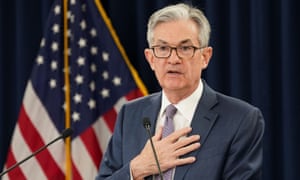
The Fed has always steered clear of corporate debt, which it considered politically sensitive. If you bought debt from individual firms, you were vulnerable to accusations of favouritism. If you bought a cross-section of debt you ended up holding many very poor-quality loans. But by the early hours of 23 March, it was clear that something had to be done to stabilise the corporate debt market. Since 2008, bonds issued by non-financial corporations have surged from $3.3tn to more than $6.5tn. If their value fell too far, US corporations would not only face shutdowns and a complete loss of revenue, but also a crippling credit squeeze.
Ideally, the Fed would have made a grand announcement in conjunction with a Congressional stimulus package. But by the evening of 22 March, it was clear that the package being proposed by the Republicans was unacceptable to the Democrats. It might take days for them to square the difference. The financial markets would not wait.
On 23 March, 90 minutes before markets opened, Powell made his move. He announced that the Fed was setting up legal entities off the books of the Fed, but guaranteed by it that would have the capacity to buy highly rated corporate debt, or at least any debt that the ratings agencies were still willing to declare investment-grade. In effect, the Fed was establishing itself as the backstop to the trillion-dollar corporate bond market. The Fed ramped up its asset-purchase programme, to an astonishing $375bn in Treasury securities and $250bn in mortgage securities in a single week.
It was an extraordinary move to widen the scope of central bank intervention into the corporate economy. And it was understood as such by the markets. Since the start of the year, the S&P 500 and the Dow Jones, as well as the FTSE 100, had lost 30% of their value. That day, they began to recover.
Two days later, on 25 March, backing arrived from Congress when the Senate passed its giant package of $2tn more than twice the size of the stimulus bill passed in 2009. It provided funds to top up unemployment insurance, to support small businesses and the USs privatised hospital system. Crucially, it also set aside $454bn to cover Fed losses. Since most loans would not be expected to go bad, this would enable the Fed to make more than $4tn in loans, if necessary.
In the US, the public health campaign against the virus was still a shambles. But as far as economic policy was concerned, the full power of the American state was now being deployed behind the emergency programme. And the Fed was also acting as a provider of dollar liquidity to the world economy. In the UK, too, the Treasury and the Bank of England were working closely to link the huge increase in government spending to efforts to stabilise financial markets.
But in the eurozone, that kind of coordination was lacking. The ECB had managed to stop the immediate panic. Yet there was still the question of whether the member states could come up with a financial plan to support their hardest-hit neighbours, Italy and Spain. The obvious solution was to issue debt jointly to fight the crisis together an idea raised repeatedly during the eurozone crisis, when it had been bitterly resisted by a conservative northern European coalition led by Germany. This would ensure that Italy was not constrained by its pre-existing financial weakness.
For a coalition of nine states led by France, Italy, Spain and Portugal, the case was obvious. On 25 March they called for a common debt instrument to fund a crisis response. The ECB threw itself energetically behind the proposal. But, once again, the Netherlands and Germany refused to budge. The issue was shoved off into the Eurogroup, a meeting of the eurozones finance ministers, where the outline of a deal did finally emerge two weeks later. By then the immediate panic had passed. As Lagarde and her central banking colleagues had feared from the outset, it was on their shoulders that the stability of the eurozone continued to rest.
Will the massive financial firewalls built by central banks on both sides of the Atlantic be enough to withstand the bad news that is headed our way over the coming weeks and months? It is too early to tell. But the first test came on Thursday 26 March, when the US Department of Labor announced that, in a single week, 3.3 million Americans had signed on for unemployment insurance. It was completely unprecedented. A graph stretching back half a century simply turns upwards in a vertical surge. In the next two weeks, another 13.5 million people would be added to the insurance rolls. And there was no end in sight. America is on pace for national unemployment to reach 30% by the summer greater than during the Great Depression of the 1930s.
The shutdown spelled disaster for millions of American families, at least half of whom have no financial reserves to speak of, and for businesses up and down the land. How would the markets react? Astonishingly, they ended 26 March up 5%. The largest surge in unemployment ever recorded in history was met with a relaxed shrug.
Why werent investors more terrified? Because the scale of Congressional stimulus made clear that, no matter how divided American politics were, that wouldnt stand in the way of a huge surge of spending. And the Fed, for its part, would make sure that the huge flow of new debt was absorbed, if necessary on to its own accounts. The private credit system, the government budget and the balance sheet of the Fed were welded together in a closed loop.
What the Fed, the Bank of England and the ECB managed to do in March was prevent the damage caused by the shutdown being made even worse by an immediate collapse of corporate credit. At the same time, by stabilising sovereign debt markets, they have enabled a huge surge in public spending to fight the crisis and cushion its social and economic side effects. To do this they have both widened the safety net to parts of the financial system never before protected, and intervened on a scale far greater even than in 2008.
In the final days of March, the Federal Reserve was buying Treasury bonds and mortgage-backed securities at the rate of $83bn per day, or just shy of $1m per second. On 9 April, at the same moment as the latest horrifying unemployment numbers were released, it announced Read more: https://www.theguardian.com/business/2020/apr/14/how-coronavirus-almost-brought-down-the-global-financial-system

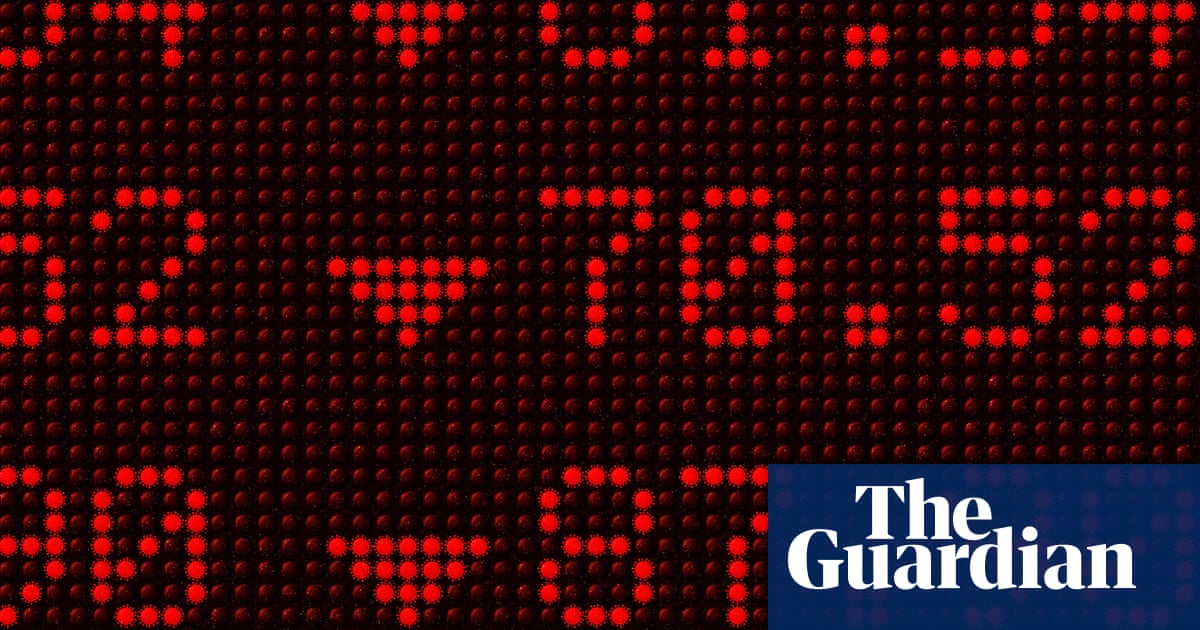
Recent Comments